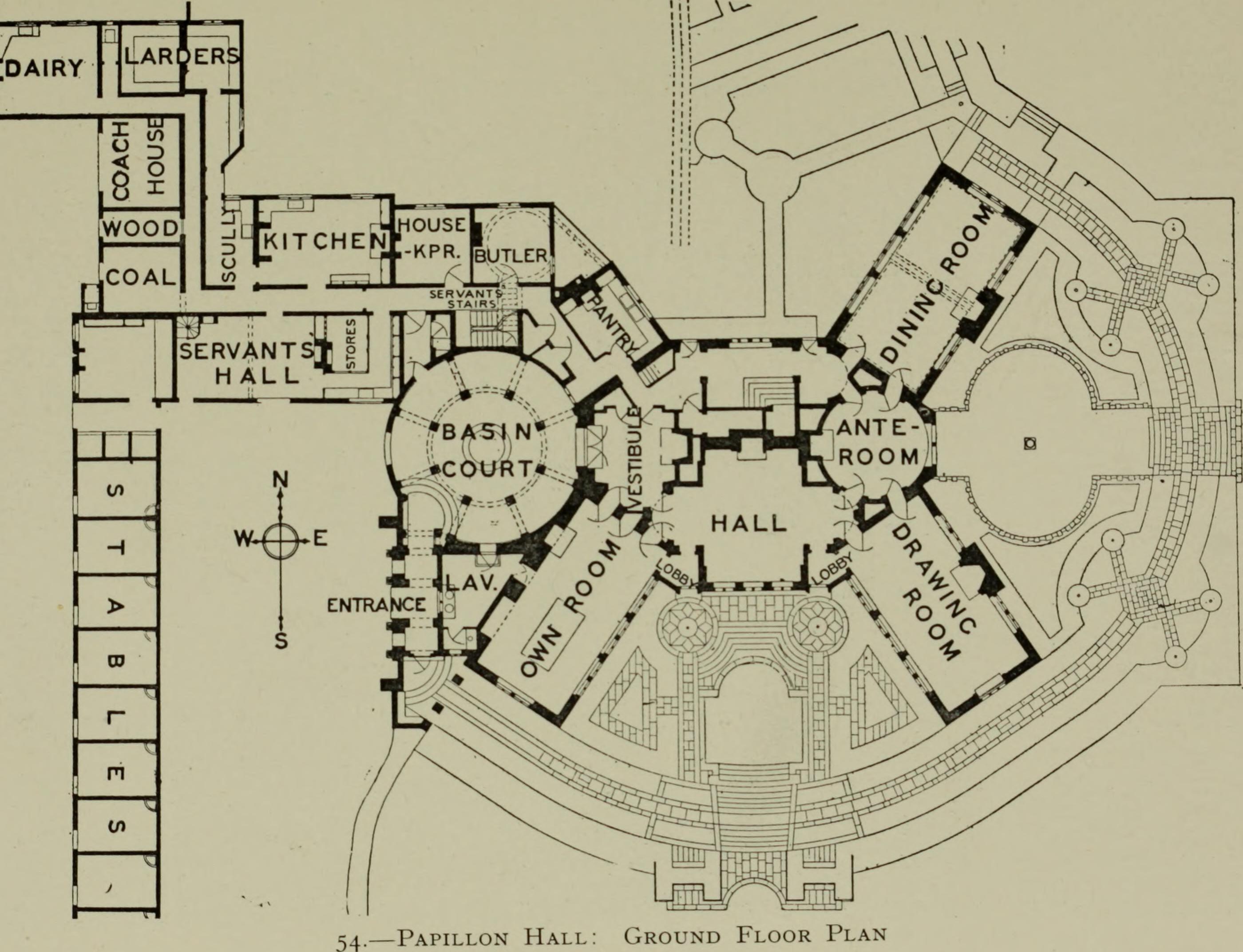Butterfly Plan on:
[Wikipedia]
[Google]
[Amazon]
 A Butterfly plan, also known as a Double Suntrap plan, is a type of
A Butterfly plan, also known as a Double Suntrap plan, is a type of
Droitwich westwood house.jpg,
 A Butterfly plan, also known as a Double Suntrap plan, is a type of
A Butterfly plan, also known as a Double Suntrap plan, is a type of architectural plan
In architecture and building engineering, a floor plan is a technical drawing to scale, showing a view from above, of the relationships between rooms, spaces, traffic patterns, and other physical features at one level of a structure.
Dimensio ...
in which two or more wings of a house are constructed at an angle to the core, usually at approximately 45 degrees to the wall of the core building. It was used primarily in late Victorian architecture
Victorian architecture is a series of architectural revival styles in the mid-to-late 19th century. ''Victorian'' refers to the reign of Queen Victoria (1837–1901), called the Victorian era, during which period the styles known as Victorian we ...
and during the early Arts and Crafts movement.
History
Westwood House
Westwood House is a stately home, near Droitwich, Worcestershire, England. It has been subdivided into twelve self-contained apartments. The house has origins as an Elizabethan banqueting hall with Caroline additions and is a Grade I listed bu ...
, Worcestershire, was a 17-century precursor. After the original, rectangular house was begun c. 1612, four diagonal wings were added at some time later in the same century.
Victorian interest in the plan originated in the 1891 remodelling of Chesters, Northumberland, by Norman Shaw
Richard Norman Shaw RA (7 May 1831 – 17 November 1912), also known as Norman Shaw, was a British architect who worked from the 1870s to the 1900s, known for his country houses and for commercial buildings. He is considered to be among the g ...
. To the original, square house of 1771 he added five wings; three of these were diagonal, creating suntrap flanks for the south and west fronts.
The principle of the butterfly plan was also re-adapted within an overall rectangular overall form, as for instance in Kallio Library in Helsinki, Finland, by architect Karl Hård af Segerstad
Karl Hård af Segerstad (28 January 1873, Helsinki – 22 October 1931, Helsinki) was a Finnish architect. He came from a Swedish family, but lived and worked his whole life in Finland, mainly in Helsinki and Viipuri (which was taken from Finland ...
, completed in 1902.
Notable Arts and Crafts examples:
* The Barn, Exmouth, Devon, by Edward Schroeder Prior
Edward Schroeder Prior (1852–1932) was an architect, instrumental in establishing the arts and crafts movement. He was one of the foremost theorists of the second generation of the movement, writing extensively on architecture, art, craftsma ...
(1897)
* Happisburgh Manor, Happisburgh
Happisburgh () is a village civil parish in the English county of Norfolk. The village is on the coast, to the east of a north–south road, the B1159 from Bacton on the coast to Stalham. It is a nucleated village. The nearest substantial to ...
, Norfolk, by Detmar Blow
Detmar Jellings Blow (24 November 1867 – 7 February 1939) was a British architect of the early 20th century, who designed principally in the arts and crafts style. His clients belonged chiefly to the British aristocracy, and later he became es ...
to a concept by Ernest Gimson
Ernest William Gimson (; 21 December 1864 – 12 August 1919) was an English furniture designer and architect. Gimson was described by the art critic Nikolaus Pevsner as "the greatest of the English architect-designers". Today his reputati ...
(1900)
* Papillon Hall, Lubenham
Lubenham is a small rural village and civil parish west of the market town of Market Harborough, in the Harborough district, in the south of Leicestershire, England. The first National Hunt Chase Challenge Cup was held in Lubenham, in the grou ...
, Leicestershire,. David Papillon (1581-1659) a French Huguenot
The Huguenots ( , also , ) were a religious group of French Protestants who held to the Reformed, or Calvinist, tradition of Protestantism. The term, which may be derived from the name of a Swiss political leader, the Genevan burgomaster Be ...
and Military architect built it in 1620. In about 1903 it was redesigned by Edwin Lutyens and demolished in 1950
* Home Place, Kelling, Norfolk, by Edward Schroeder Prior (1903–4)
* Kelling Hall, Kelling, Norfolk, by Edward Maufe
Sir Edward Brantwood Maufe, RA, FRIBA (12 December 1882 – 12 December 1974) was an English architect and designer. He built private homes as well as commercial and institutional buildings, and is remembered chiefly for his work on places ...
(1913)
* Yaffle Hill, Broadstone, Dorset
Broadstone is a suburb of Poole in Dorset, England. It is located from Hamworthy railway station and from Bournemouth International Airport. The ward had a population of 10,303 at the 2011 Census, increasing from 10,256 at the 2001 Census. ...
, by Edward Maufe (1930)
Gallery
Westwood House
Westwood House is a stately home, near Droitwich, Worcestershire, England. It has been subdivided into twelve self-contained apartments. The house has origins as an Elizabethan banqueting hall with Caroline additions and is a Grade I listed bu ...
Thebarnexmouth.jpg, The Barn
Voewood 21.JPG, Home Place
Kelling Hall 30th August 2008.JPG, Kelling Hall
Kallion kirjasto.jpg, Kallio Library, Helsinki
References
{{Reflist Arts and Crafts movement House types House styles Victorian architecture